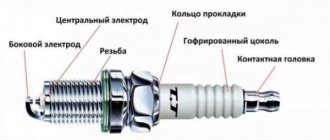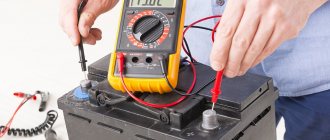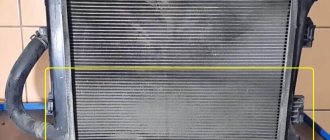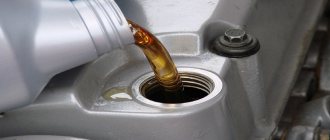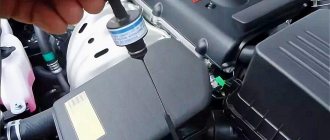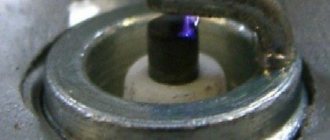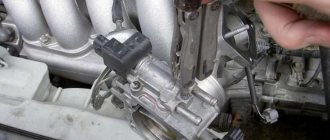Spark plugs are an engine element, the proper operation of which affects the operation of the engine, and therefore the vehicle. The uninterrupted operation of these units ensures that there are no gaps in the starting system and, as a result, proper power, as well as normal fuel consumption.
Replacing spark plugs on a Toyota Corolla is a periodically necessary procedure. The car owner independently decides which parts to use - original parts or budget analogues. As a rule, updating the ignition elements on your own is not difficult, Corolla is no exception in this regard.
Candle life
If we look at the regulations from Toyota, the service life of the spark plugs depends on the engine:
- for a 1.4 liter engine - about 40 thousand kilometers.
- for a 1.6 liter engine - 80-100 thousand kilometers.
Naturally, we are talking about original elements. Also, this replacement period is designed to use high-quality fuel. During the operation of the spark plugs, the electrodes burn out, and the gap also increases, which leads to the formation of misfires. If the spark plugs are not replaced on time, then increased gasoline consumption may be observed, and the internal combustion engine will start poorly or stop doing so altogether.
Normal clearance size
The permissible limits of the interelectrode distance are from 0.6 to 1.2 mm. A more precise value is selected depending on the type of engine, power supply and ignition system:
- old-type carburetor engines with a low compression ratio and a mechanical spark generation system - 0.6–0.7 mm;
- the same engines equipped with non-contact electronic ignition – 0.8–0.9 mm;
- in turbocharged and naturally aspirated power units with fuel supplied by injection (injector), the gap on the spark plugs should be from 1 to 1.2 mm.
Advice. The best way to correctly determine the interelectrode clearance for a particular vehicle is to carefully study the operating instructions. In the vast majority of cases, this value is indicated among other setting parameters.
Since the owners of many vehicles equipped with gasoline engines switch to liquefied gas, the size of the spark plug gap requires adjustment. For high-quality combustion of a mixture of propane and air, it is recommended to increase the ignition intensity by increasing the clearance by 0.1 mm from the rated value. The load on the high-voltage coil will increase slightly, and the gas will burn better.
For example, the spark plug electrodes of a carburetor engine with electronic ignition must be bent to 0.9 mm, if the operating instructions indicate the figure 0.8. Do not listen to bad advice and do not make the gap too large, because automobile gas installations of all generations start on gasoline, and then automatically switch to supplying a propane-butane mixture from a cylinder. In addition, you will still have to use gasoline fuel to get to the gas station when the gas in the tank runs out.
We recommend: Removing scratches on a car body without painting
Signs of faulty spark plugs
The main symptoms that may indicate the need to replace spark plugs:
- increased gasoline consumption;
- at idle, extraneous engine vibrations are observed (as a rule, accompanied by a blinking “Check Engine”);
- weak acceleration dynamics;
- failures during acceleration;
- idle speed floats;
- Computer diagnostics revealed misfires.
It is important to understand that such symptoms do not indicate problems with the spark plugs; for example, they may indicate problems with the ignition coils and other malfunctions of the internal combustion engine.
Description of the process for checking the ignition coil on a Corolla
If you suspect that one of the Toyota Corolla ignition coils has failed, you must use the method below to identify the faulty element:
- Start the power plant.
- Open the hood.
- Remove the power plugs from the ignition coils one by one. If the sound of the motor does not change after removal, then with a high degree of probability this indicates a malfunction.
This method carries the risk of damaging the ECU, so it should only be used in extreme cases.
Another method of identifying a faulty coil is to install a known-good product in its place. The main disadvantage of this method is the need to have a spare, working coil.
- An indirect sign of a coil malfunction is the unsatisfactory condition of one of the spark plugs. Due to the lack of normal ignition, carbon deposits appear on the electrodes.
Checking the ignition coil should begin with its visual inspection. It is necessary to check the condition of the body and tips. There should be no cracks, deformations, soot or discoloration.
Longitudinal crack on the body
Presence of cracks on the tip
If there are defects, do not try to eliminate them using electrical tape or heat shrink. Their breakdown voltage is much lower than that created by the ignition coil. The only way to repair is to replace the damaged area with epoxy resin.
If a visual inspection does not reveal any defects, then it is necessary to check the condition of the coil using measuring instruments. They can be used as a multimeter or ohmmeter. It is necessary to measure the resistance at the control points. They are the central electrode and the terminal block contacts.
Block diagram of the ignition coil device
To check if the coil is faulty, you need to check the resistance between the contacts and the central electrode. The data obtained should be entered into the table and compared with a working coil. Any significant deviations indicate a malfunction of the product being tested.
Coil test process
Contact numbering example
Table - Summary data to identify a faulty coil
It is also necessary to check the condition of the insulation. To do this, use a megger or multimeter. You should check that there is no breakdown between the contacts and the housing.
Original ignition coil and analogues
If the coil still fails, you need to buy a new one to replace it. The original reel had part number 90919-02258, but recently the part number was replaced with 90919-02252.
The cost of the original coil is high, so you can choose good analogues:
- NGK 48395
- Denso DIC-0103
- Bremi 20443
- Stellox 61-00022-SX
How to choose candles
It is important to rely on their basic parameters to determine which spark plugs are best suited for the engine.
- Thread length and size. It is important to choose the right size (on a turnkey basis), as well as the thread. For a 1.4 liter engine, the thread length should be 26.5 mm, and the size (on a turnkey basis) should be 14 mm. For a 1.6 liter engine, spark plugs with a threaded part diameter of 12 mm are suitable.
- Resistance. For Corolla, this parameter will be equal to 5 kOhm.
- Type of candles. From the factory, 1.4 engines are equipped with simple nickel spark plugs, and 1.6 engines are equipped with iridium spark plugs.
- Gap. For simple spark plugs (1.4 motor) it should be 1 mm, and for iridium spark plugs (1.6 motor) - 1.1 mm.
When does spark plug gap need to be adjusted?
The gap on the spark plug is set at the manufacturing plant, and it should not worry the driver if the engine is running stable. But all cars can have problems in the combustion chamber, and many of them can be diagnosed by spark plug soot. Accordingly, in the event of certain malfunctions, the spark plug gap may change and will need to be set as recommended. Even with stable engine operation, the gap on low-quality spark plugs may change slightly, which is why it is not recommended to skimp on them. A slightly changed gap will affect fuel consumption, and the saying “the miser pays twice” will come into play.
Experienced car owners recommend checking the gap in the spark plugs and comparing it with the standards 2 times a year. This is due to the fact that every six months, caring drivers clean the spark plug from carbon deposits, and it is convenient to also adjust the gap during this procedure.
Original Toyota spark plugs
The table shows original spark plugs for Toyota Corolla 150.
| Motor | Volume | Electrode type | vendor code |
| 4ZZ-FE | 1.4 liters | Nickel | 90919-01164 |
| 1ZR-FE | 1.6 liters | Iridium | 90915-01253 |
Original spark plugs will be the best solution when replacing; they do their job perfectly, have a long service life, and also eliminate any difficulties due to mismatched characteristics.
What are the acceptable standards?
The spark plug gap is usually called the size of the gap between the upper and lower electrodes. This parameter is determined by the make of the car and the technical characteristics of the engine. You can find the gap between the electrodes recommended by the car manufacturer in the vehicle’s operating instructions. In the absence of such documentation, it is possible to find the information of interest on the Internet.
What should be the gap between contacts? The vehicle’s ignition system affects the value of this parameter in the following way:
- the norm is considered to be a size of 0.5-0.6 mm in carburetor cars equipped with a distributor;
- a dimension of 0.7-0.8 mm is allowed in carburetor cars with electronic ignition;
- the distance within the normal range for injection machines is 1-1.3 mm.
The difference in recommended sizes is due to the electrical circuit and ignition system. Carburetor cars have the lowest voltage; for their normal operation, a weaker spark is needed, therefore, the gap is the smallest. For injection machines, the gap increases, since the voltage in the system is very high.
Let's consider two options for incorrect spark plug gap:
- very small;
- too big.
In the first case, due to insufficient distance between the electrodes, breakdowns will occur in the ignition system. The spark plug will be too small for normal ignition of the combustible mixture. In this case, the car will not gain momentum and will begin to twitch when driving. In the case of carburetor cars, it is possible to fill the spark plugs due to insufficient clearance, the engine will begin to stall.
A spark plug gap that is too small is considered to be within the range of 0.1-0.4 mm. Please note: there are engine modifications for which spark plugs with a very small gap between the electrodes are purposefully used - this allows the ignition system to be adapted to the increased power of the power unit. The principle is as follows: as power increases, the gap between the contacts decreases.
In the second option, a decrease in the spark passing between the contacts can be observed. It may not even be sufficient to ignite the fuel mixture. In this regard, breakdowns of the lower contact insulator are observed.
An increased spark plug gap occurs if the spark plugs are worn out: the material from which the contacts are made burns out with a large amount of mileage. At the same time, the lower electrode sags down, and the upper one loses its original rectangular shape; in cross-section it becomes like an oval.
We recommend: Advantages of ordering a car battery from a local company rather than from network companies
Please note: carbon deposits may form on the spark plugs, interfering with the passage of the spark. In this regard, as the mileage of the car increases, it is necessary to clean or replace the spark plugs. A gap between contacts of more than 1.3 mm is considered too large.
Analogs
If you can’t purchase the original or you need to save money on buying candles, you can use various compatibility catalogs, with the help of which you can accurately select the appropriate option. It is advisable not to choose options that are too cheap, since they mostly use cheap materials, which has a bad effect on their resource.
The table shows good analogs for the 1.4 liter engine.
| Brand | vendor code |
| Bosch | 0242229798 |
| Denso | 4603 |
| Champion | OE063/T10 |
| NGK | 2756 |
| NGK | 3764 |
Below you can find good analogues for the 1.6 liter engine.
| Brand | vendor code |
| Denso | IXEH22TT |
| NGK | ILKAR7B-11 |
| Bosch | 0 242 129 529 |
| LYNXauto | SP-152 |
| Hella | 8EH 188 705-161 |
The value of optimal clearances
Acceptable operating parameters at which the system remains fully operational are gaps in the range of 0.6–1.2 mm. Clear values are selected depending on the type of power plant, various power supply and ignition systems. You should focus on the following characteristics:
- old carburetor engines, which have motors with a low compression ratio and mechanical sparking functionality, will work optimally at 0.6–0.7 mm;
- similar power plants with modernized contactless ignition using electronics will be effective at 0.8–0.9 mm;
- for naturally aspirated engines reinforced with turbines and equipped with an injection type injection, it is preferable to provide a gap of 1–1.2 mm.
Spark plug replacement procedure
The replacement process is not difficult and absolutely every car enthusiast can handle it. To perform the procedure, you must first make sure that you have the necessary tools:
- spark plug wrench (you can take a 14mm socket with a torque handle and a long tip);
- a magnetic tip or similar tool that can be used to retrieve spare parts that have fallen into wells, if necessary;
- key to 10;
- rags.
The replacement process consists of several simple steps:
- unpack the spark plugs and examine their condition for the absence of visible defects; it is also necessary to remove the protective caps;
- if the engine has just been turned off, then you need to wait until it cools down;
- Use a 10mm wrench to remove the protective plastic from the motor;
- unscrew the coils with a 10 mm wrench or socket;
- remove the connectors from the coils;
- remove the coils and wipe them if necessary;
- unscrew with a special key;
- if you cannot get the spark plug with a key, then you need to use a magnetic or other grip;
- install new spark plugs, if a torque wrench is used, then the required tightening torque is 20 Nm, if there is no wrench, then you need to tighten the spark plug tightly by hand, and then turn it another half turn with the wrench;
- install and connect coils;
- tighten the coils;
- install and secure the protective plastic.
And don’t forget to subscribe to our Telegram channel to receive news
What is the gap on spark plugs on gas?
Recently, the trend towards saving resources has been reflected in the automotive industry. Many car owners install modern gas equipment in their cars. However, not everyone knows that calibration is required for high-quality sparking.
After installing all the gas elements of the system, it is worth slightly raising the clearance on the spark plugs by one tenth of the rated gasoline value. Although the load on the built-in coil will slightly increase, the fuel gas mixture will ignite better, which will have a positive effect on the car’s power. Also, when choosing candles, it is important to give preference to products with a high heat rating so that the candles are “cold”.
The gap of an iridium spark plug has little effect on its performance. Contacts made of precious metals are more durable and produce a better spark. Additionally, the discharge bypasses the central contact along the diameter of the circle and ensures self-cleaning of this element.
The normal condition of the spark plugs is the key to the normal operation of the engine and its components. If you identify faulty spark plugs in a timely manner and replace them regularly, you will be able to avoid the vast majority of problems and protect yourself from burdensome and expensive engine repairs.
Engine diagnostics based on carbon deposits on insulators
Take this opportunity to look at the spark plug insulators; their appearance can tell you a lot; you just need to understand what it says. After all, this element of the ignition system works in the combustion chamber of the cylinder and all the processes taking place there are reflected in its condition and appearance. It would not be an exaggeration to say that it is also a diagnostic probe built into the heart of the engine.
- The spark plug insulators are in good working order and the engine is running should be light brown in color and should not have soot deposits or burnt oil. If the spark plug insulator and the central electrode are covered with a velvety black coating, then this indicates either a malfunction in the ignition system or incorrect adjustment of the system preparing the fuel-air mixture, and if the engine is fuel-injected, then one of the sensors of this system may fail.
- The color of the insulator from light gray to white without carbon deposits indicates an excessively lean mixture.
- The brick-red color of the insulator indicates deposits of tetraethyl lead on it and that this spark plug, without cleaning, will soon experience an electrical breakdown of the insulator and failure.
- Traces of oil on the spark plug, as you might guess, indicate increased oil consumption. To determine its cause, observe the exhaust immediately after starting the engine. If there is a blue cloud of smoke with the smell of burnt oil, this indicates that while the car was parked, oil has accumulated in the combustion chambers through the valve seals. So it's time to change the caps. If the smoke is all blue from starting the engine and beyond, then the reason for oil consumption is most likely wear on the piston rings.
- A thick, white, loose coating on the spark plug appears when antifreeze enters the combustion chamber; this happens when the gasket between the cylinder head and the cylinder block is defective or due to thermal deformation of the cylinder head. When an engine operates with such a malfunction, bubbles of exhaust gases are observed in the expansion tank, passing into the cooling system through the same defect. The exhaust from such a malfunction partly consists of coolant vapors.
Service life and replacement frequency on Toyota Corolla 150
The manufacturer indicates the service life of spark plugs for the 1.4-liter 4ZZ-FE unit at 40 thousand km or 48 months of operation (subject to the use of gasoline of proper quality and timely maintenance). When using a 1.6-liter 1ZR-FE engine on a Corolla 150, the service life is increased to 100 thousand km (without limitation on operating time).
Unscheduled maintenance of the ignition system is carried out when failures in engine operation are detected, indicating a breakdown of the dielectric or burnout of the spark plug electrodes.


